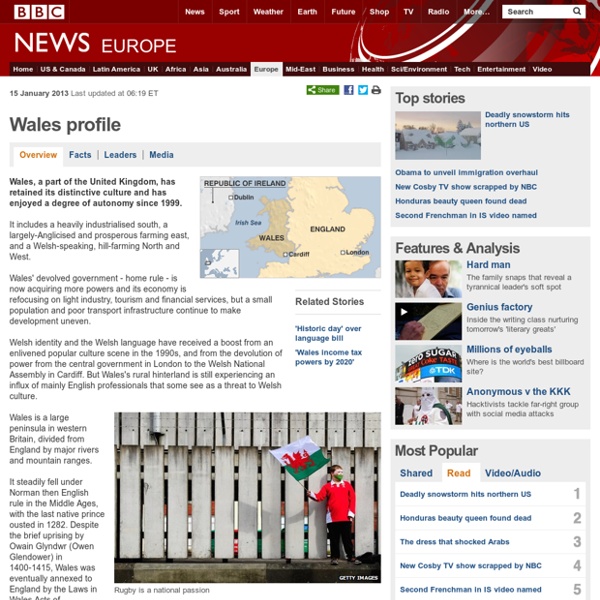Wales profile - Overview

10 English jokes to make learning English fun.
Laughter is the best medicine Jokes are an essential part of any language and culture and are a great way of understanding the target language through the play on words and a culture’s sense of humour. The English Language is filled with witty, clever jokes that illustrate the play on words such as homophones, double entendre and puns like this: Did you hear about the guy whose whole left side was cut off? He’s all right now. Every evening I share a joke on my Facebook Page under the title of Evening Fun. “I’m not sure that’s what they mean by now reduce the wine” 1. 2. Source: English is Fun 3. 4. Source: The Spectator 5. 6. 7. Source: Dawn French Fan Page 8. 9. Source: Woodward English 10. For more jokes, do take a look at the English Club. If you liked this post please share it. Have a great weekend, folks. Ciao for now Shanthi
Taboos and Issues – Controversial Discussion Topics | ESL Docs
TABOOS AND ISSUES is a photocopiable Teachers’ Resource Book. It covers many serious issues which are usually, and quite reasonably, considered unsuitable for inclusion in general coursebooks. It provides the opportunity for adults to discuss controversial issues. The book claims to cover ‘stimulating and relevant topics’ like ‘those we find in the newspapers everyday’ but are not covered in the usual ‘bland’ teaching materials ‘ devoid of the topics we discuss in our daily lives’, and with certain exceptions such as animal rights and ‘How honest are you?’ the topics are most certainly the most unusual and interesting part of the book. Read the full review @
25 maps that explain the English language
English is the language of Shakespeare and the language of Chaucer. It’s spoken in dozens of countries around the world, from the United States to a tiny island named Tristan da Cunha. It reflects the influences of centuries of international exchange, including conquest and colonization, from the Vikings through the 21st century. Here are 25 maps and charts that explain how English got started and evolved into the differently accented languages spoken today. The origins of English 1) Where English comes from English, like more than 400 other languages, is part of the Indo-European language family, sharing common roots not just with German and French but with Russian, Hindi, Punjabi, and Persian. 2) Where Indo-European languages are spoken in Europe today Saying that English is Indo-European, though, doesn’t really narrow it down much. 3) The Anglo-Saxon migration 4) The Danelaw The next source of English was Old Norse. 5)The Norman Conquest 6) The Great Vowel Shift The spread of English Credits
Related:
Related:



